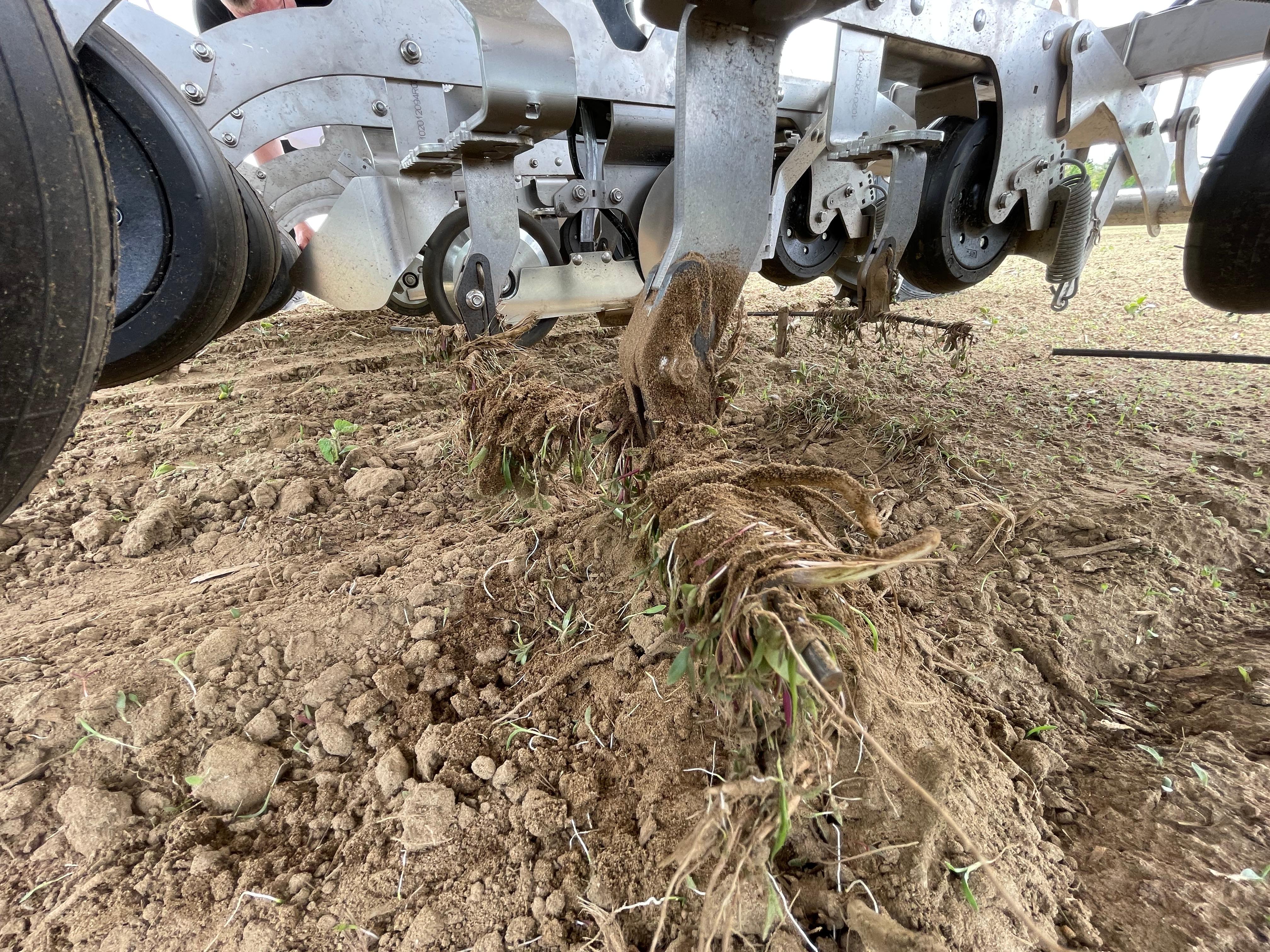Maximizing Weeding Efficiency: Maintaining Your FD20’s Weeding Knives and Wires
Ensure consistent, high-precision weed control and protect your crop yields with timely inspection and replacement of weeding components on your FarmDroid FD20.
The majority of your FD20’s field hours will be dedicated to weeding operations.
Maintaining optimal weed control requires the use of weeding knives and wires in good condition—damaged or heavily worn tools can lead to increased weed pressure and reduced yields.
It can be challenging to specify exactly when to replace weeding knives and wires, as wear varies depending on field conditions and usage. We recommend closely monitoring your robot during daily operations to assess tool performance. If you notice any tools are not functioning as intended due to wear, consider replacing them promptly.
Below, you’ll find photos illustrating both new and worn tools to help you determine when replacement is necessary.
WEEDING KNIVES
As the FD20 operates in the field, the weeding knives gradually wear down and become thinner, with the rate of wear influenced by total field hours and soil characteristics.
While these knives typically do not bend, they should be replaced when they become too short to effectively cover the intended working area.
 |
New weeding knife. |
 |
Almost new. |
 |
Showing early signs of wear—plan to replace them soon to maintain optimal performance. |
 |
Worn—this knife no longer effectively sweeps the entire weeded area and should be replaced. |
 |
Severely worn—this knife is no longer able to cover the intended weeding area and should be replaced without delay. |
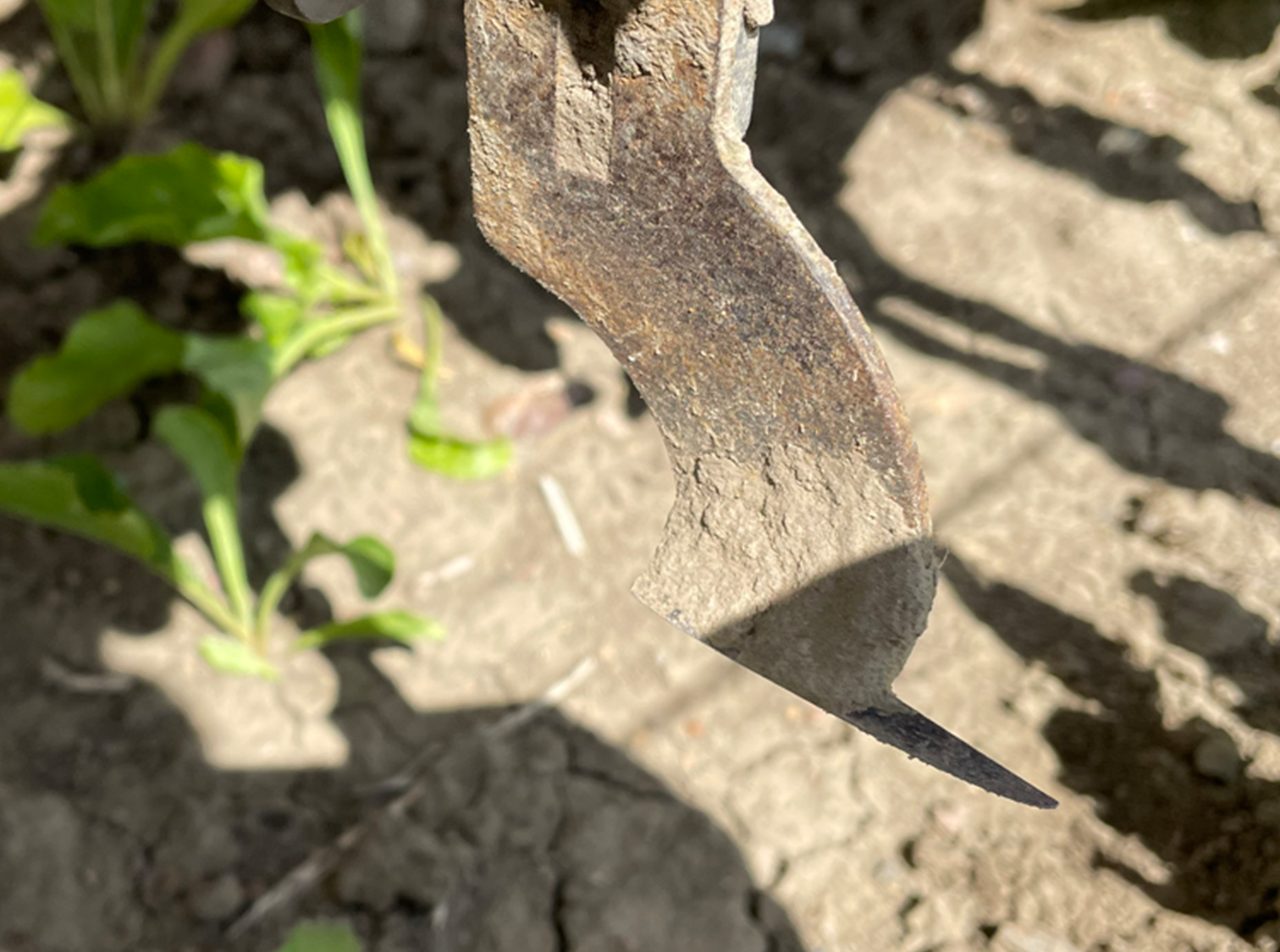 |
Extremely worn—at this stage, the knife is ineffective and unable to remove any weeds. Replace immediately to maintain optimal weeding performance. |
WEEDING WIRES
Much like the knives, weeding wires gradually become thinner as the FD20 operates, with wear depending on total field hours and soil texture. As they thin, the wires may also begin to bend.
If a weeding wire bends and is still sufficiently thick, it can be straightened and continue to function effectively. However, we recommend replacing weeding wires once they become too thin to be straightened or if they sustain permanent damage, such as losing part of the wire.
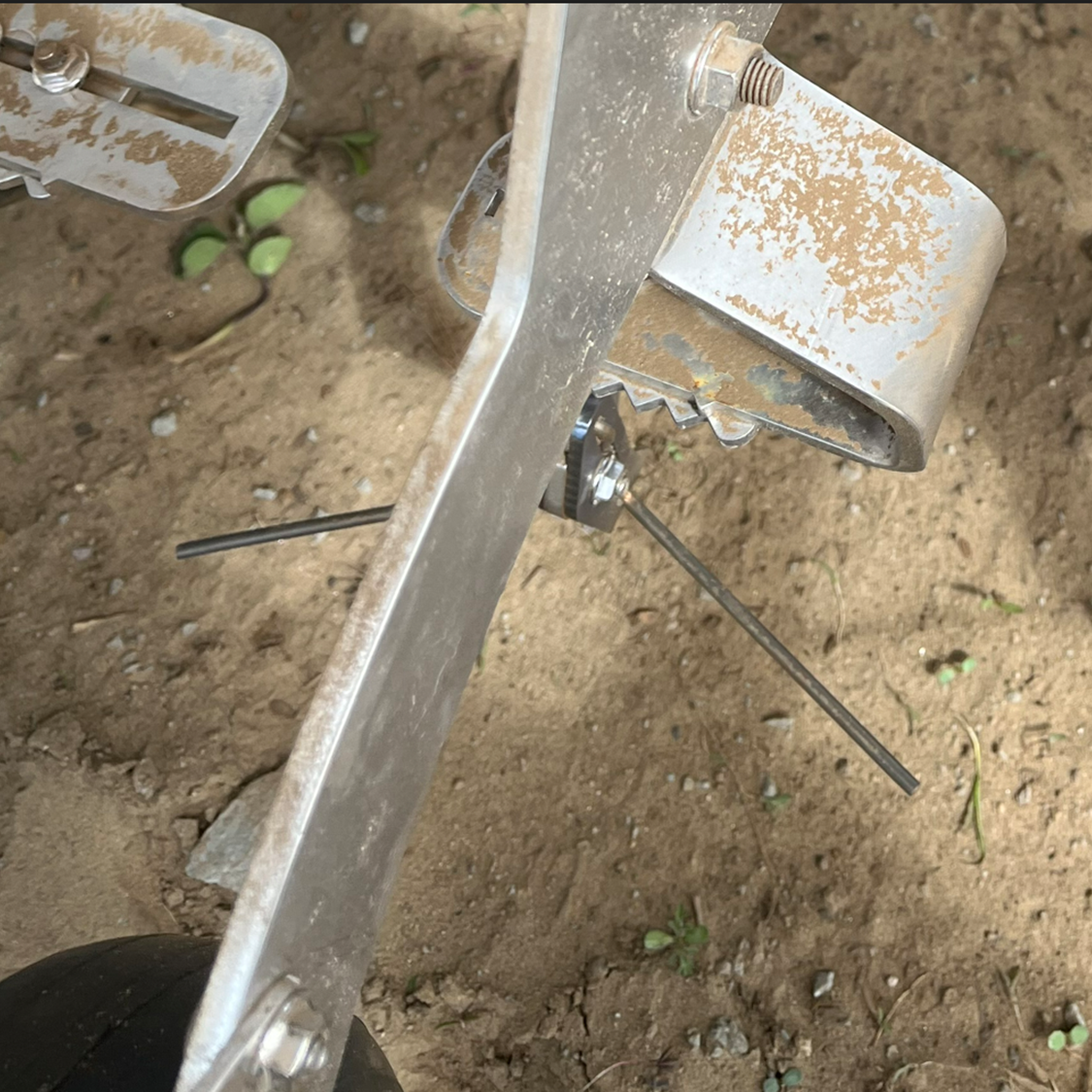 |
New weeding wire. |
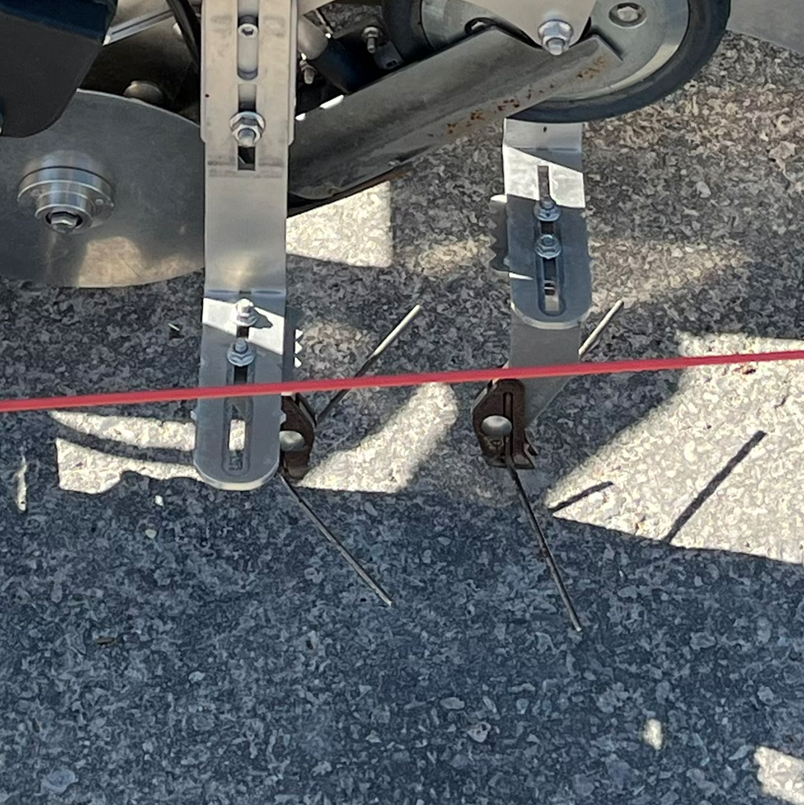 |
Lightly used—shows minimal signs of wear. |
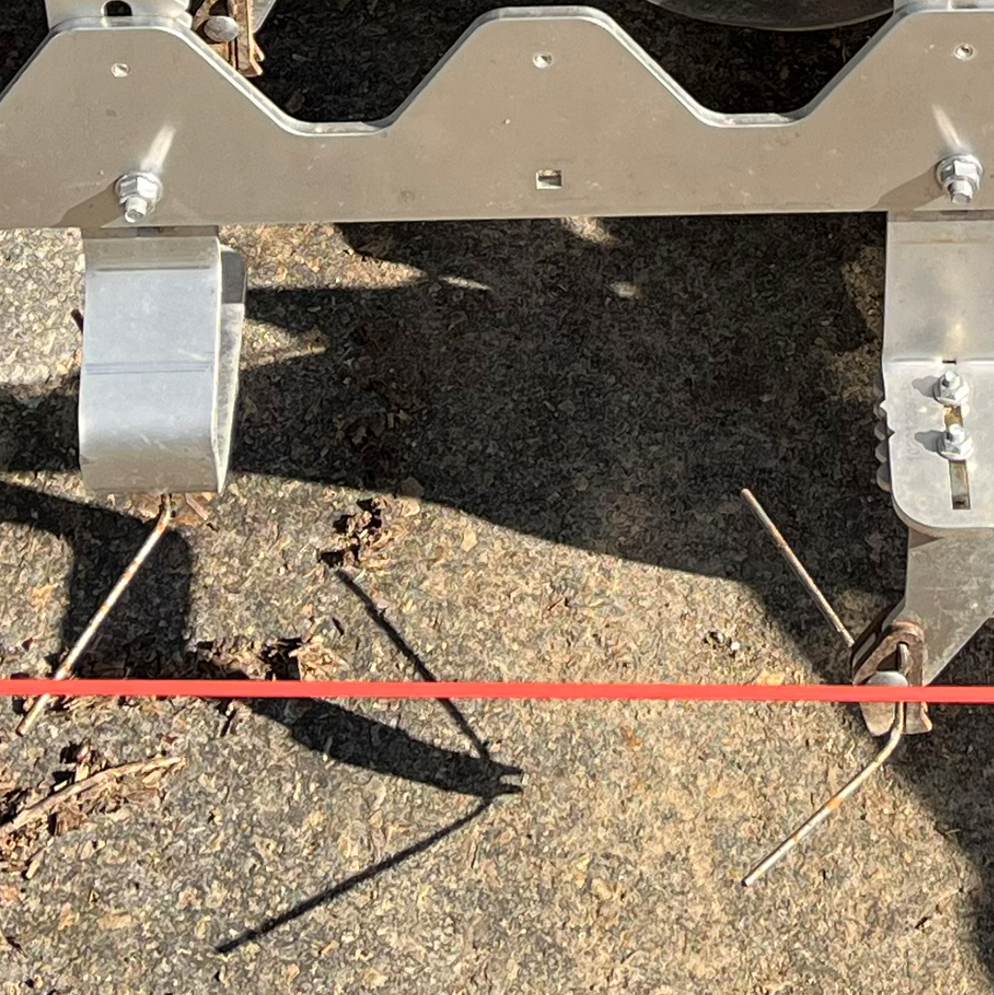 |
Slightly bent—if the wire retains sufficient thickness, it can be straightened and continue to deliver reliable performance. |
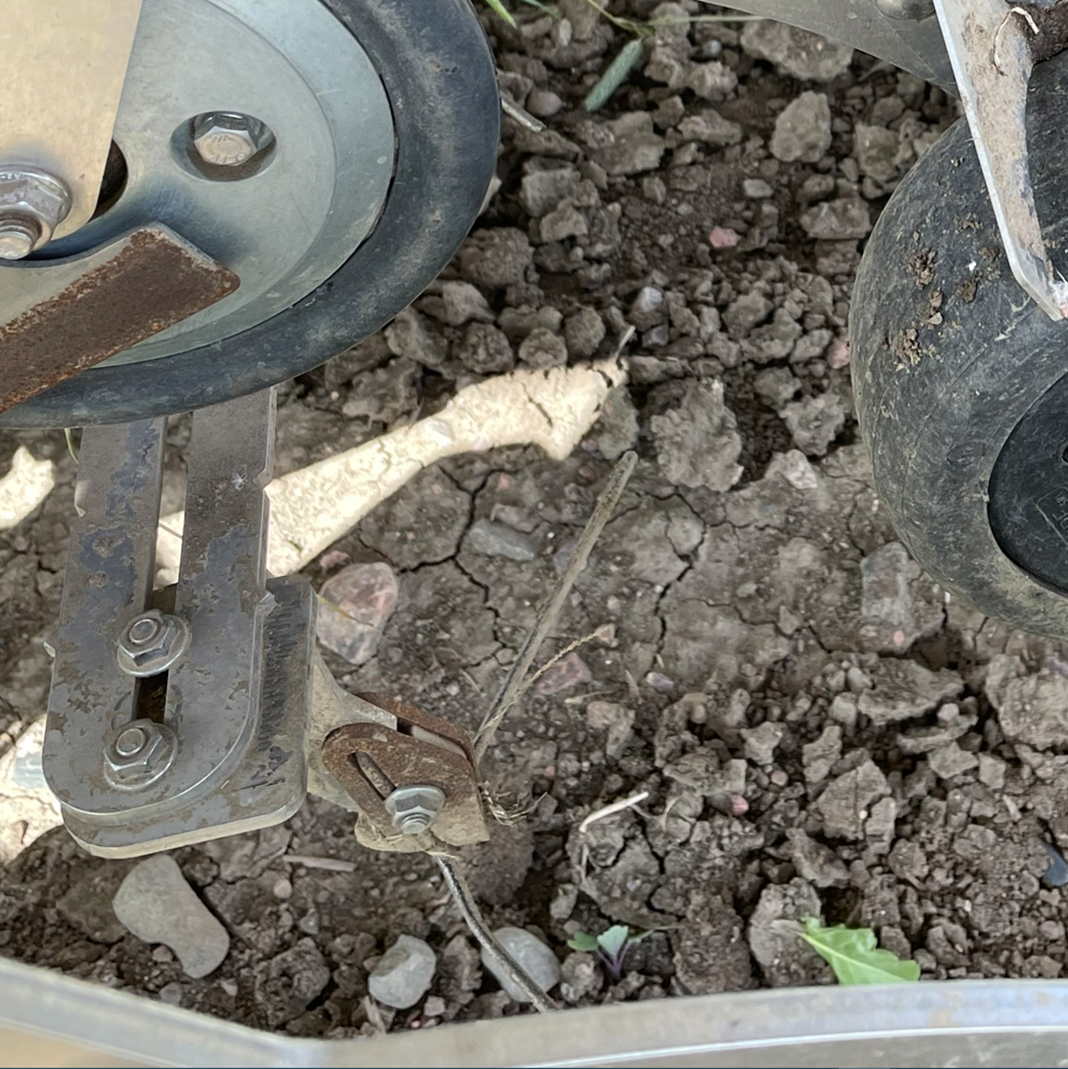 |
Bent—if the wire is still thick enough, it can be straightened and continue to perform effectively. |
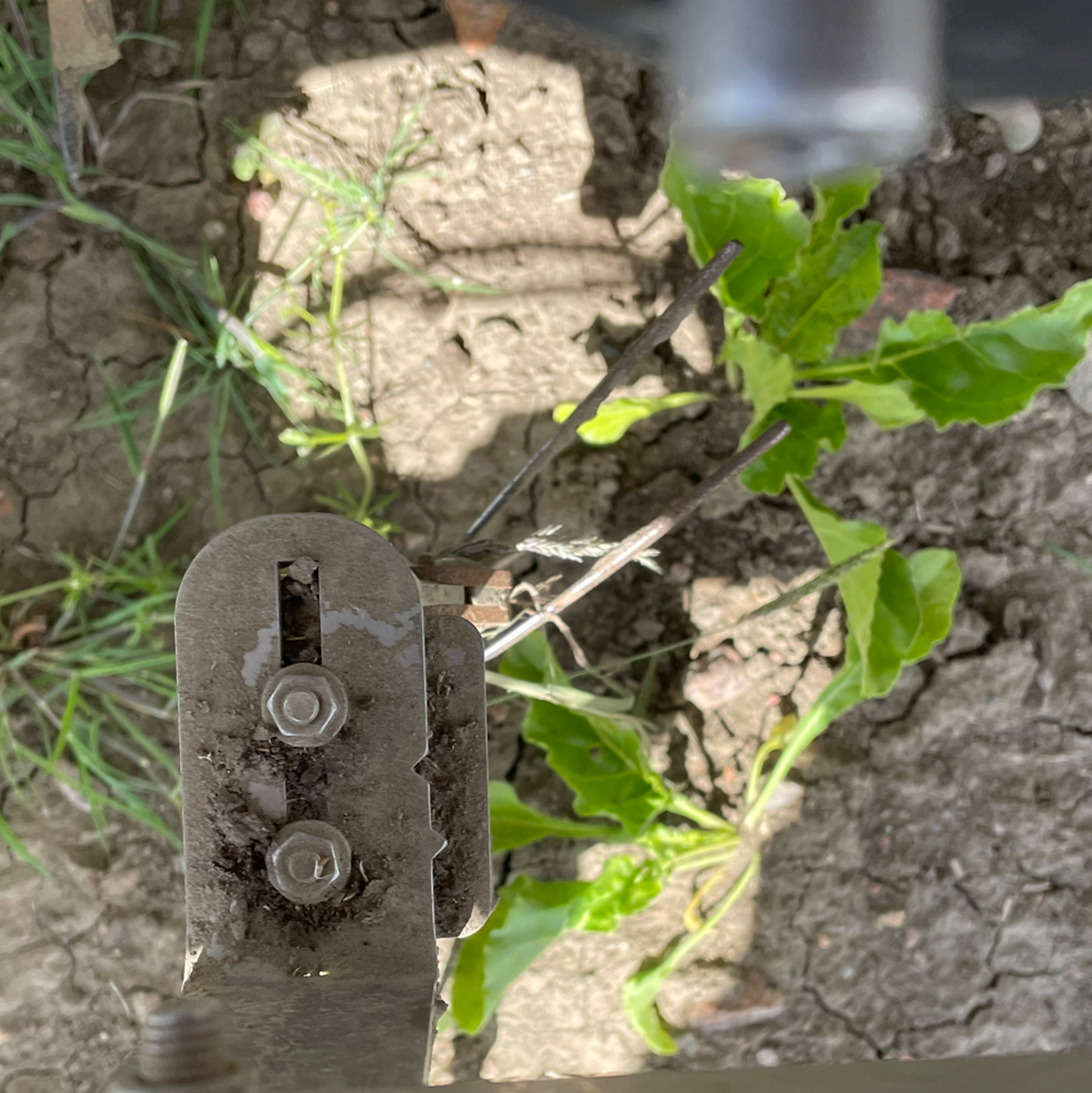 |
Severely bent wire. When the wire reaches this condition, it indicates excessive wear of the metal. The wire should be replaced immediately. |
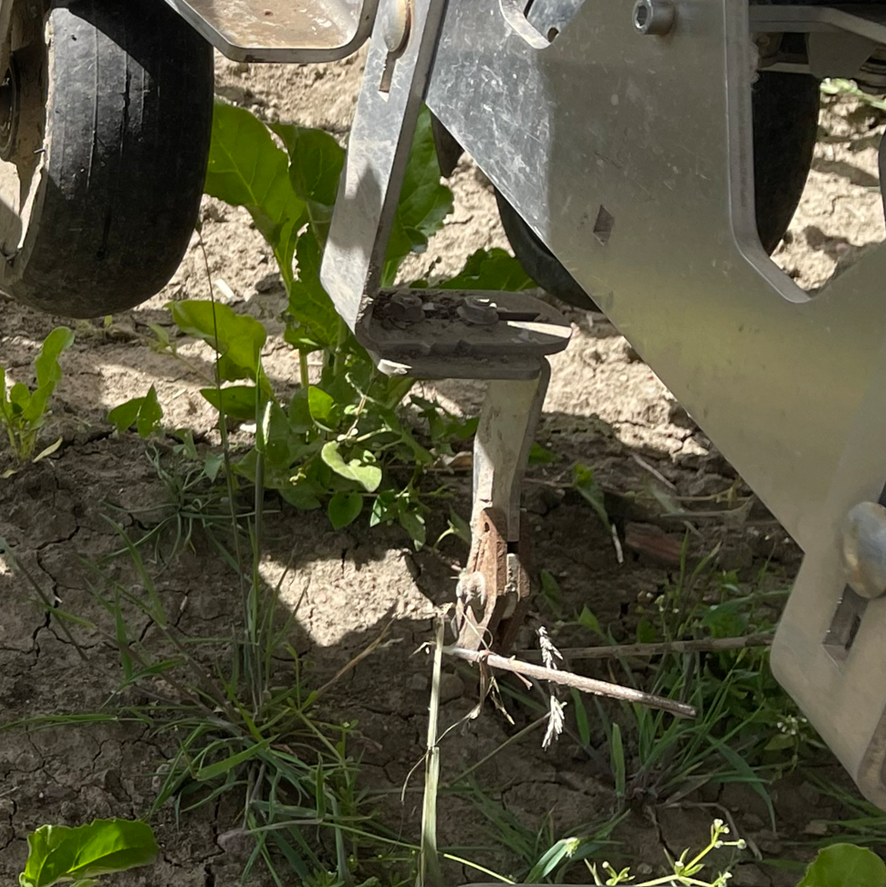 |
Completely bent. This weeding wire is well past its serviceable life and should have been replaced earlier. In its current state, it cannot perform its intended function. |
Timely replacement of weeding knives and wires is essential to maintain effective weed control and protect your crops. Regularly inspect and renew these components as needed to ensure your FD20 continues to deliver optimal performance in every field operation. 😀👇
